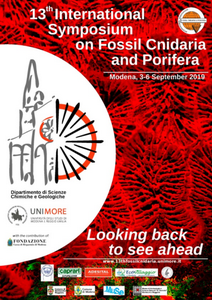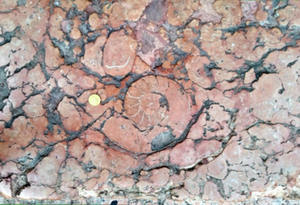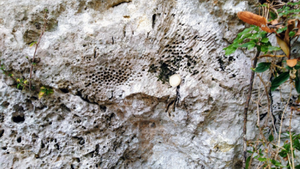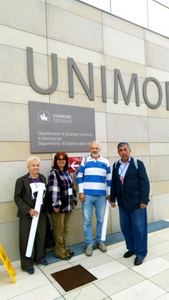
The International Association for the Study of Fossil Cnidaria was founded there, subsequently named the International Association for the Study of Fossil Cnidaria and Porifera (IASFCP), a member of which has been an author since 2003. Every four years, the Association holds symposiums around the world to showcase the world's latest achievements in coral and sponge exploration. The Association has its own periodical "Fossil Cnidaria & Porifera".
This year, the Forum was held in the small town of Modena in northern Italy, home of the famous Luciano Pavarotti.
The city is known since ancient Rome. Since Roman times, little has been preserved - the remains of necropolises with ancient Roman inscriptions and a fragment of a stone road. The area and structures of the later times of the central part of the city are included in the UNESCO heritage. The XII century cathedral, the tower, the stone pavement of the central square and the especially unique sculptures of Romanesque lions are remembered forever. Most of the structures are made of Cenozoic organogenic limestones, among which are often the polished surfaces of red marbled Ammonitico Rosso limestones with remains of ammonites, belemnites and other Jurassic fauna.
The symposium was held near the center at the Department of Chemical and Geological Sciences, University of Modena and Reggio Emilia. This university was founded in 1175 and is one of the oldest in Italy. The Department of Chemical and Geological Sciences is housed in a new home with wooden dinosaur models in the patio.
Besides the representatives of Italy, scientists from the USA, Canada, Jamaica, Poland, Uzbekistan, Tajikistan, Germany, Great Britain, Belgium, Spain, Australia, Switzerland, Austria, Morocco, Ethiopia, Russia, France, Ireland, Japan, China, South Korea participated in the symposium, total over 120 people. Ukraine was represented by the author of these notes, who made a report on the results of the study of the Donetsk Basin coal corals.
The sessions discussed the issues of systematics, mineral and chemical composition of reef-forming organisms of different ages, conditions of formation of reef systems in geological history - cold-water and warm-water, deep-water and shelf biogerm structures. The results of studies of the stability of reef systems under severe climatic changes, including changes in carbon dioxide content in the atmosphere, temperature fluctuations and other factors were interesting. Abstracts were created and the symposium materials are planned to be published in the Italian scientific journal Bollettino della Società Paleontologica Italiana.
At the final plenary meeting, the updated charter was adopted, the name of the organization was changed to the International Fossil Coral and Reef Society (IFCRS) and its new leadership was elected. The next symposium will be held in Poland with the possible involvement of Ukraine in conducting field geological excursions to Tovtra and sections the Dniester basin.
Field trip to the Alpine foothills
The four-day session was preceded by a pre-congressional field trip to the Carnic Alps, and post-congress excursions to the Cenozoic reef regions of Italy. One of these excursions to the Oligocene reefs of the Southern Alps was also attended by the author of these notes. Participants of the excursion visited different zones of the Oligocene reef system of Lesina and Berichi, including the facies of lagoons, coral limestones and coral reef itself. The latter one forms a steep rock ledges, which due to karst processes formed the caves that were built and used by humans since ancient times. In general, the landscape is very similar to Crimean Cuesta where natural cliffs with caves were transformed into ancient fortified settlements and religious buildings.
References:
- 13th International Symposium on Fossil Cnidaria and Porifera. Modena, Italy, 3-6 September 2019. Abstract Book. Modena, University of Modena and Reggio Emilia, DSCG. – 84 p.




